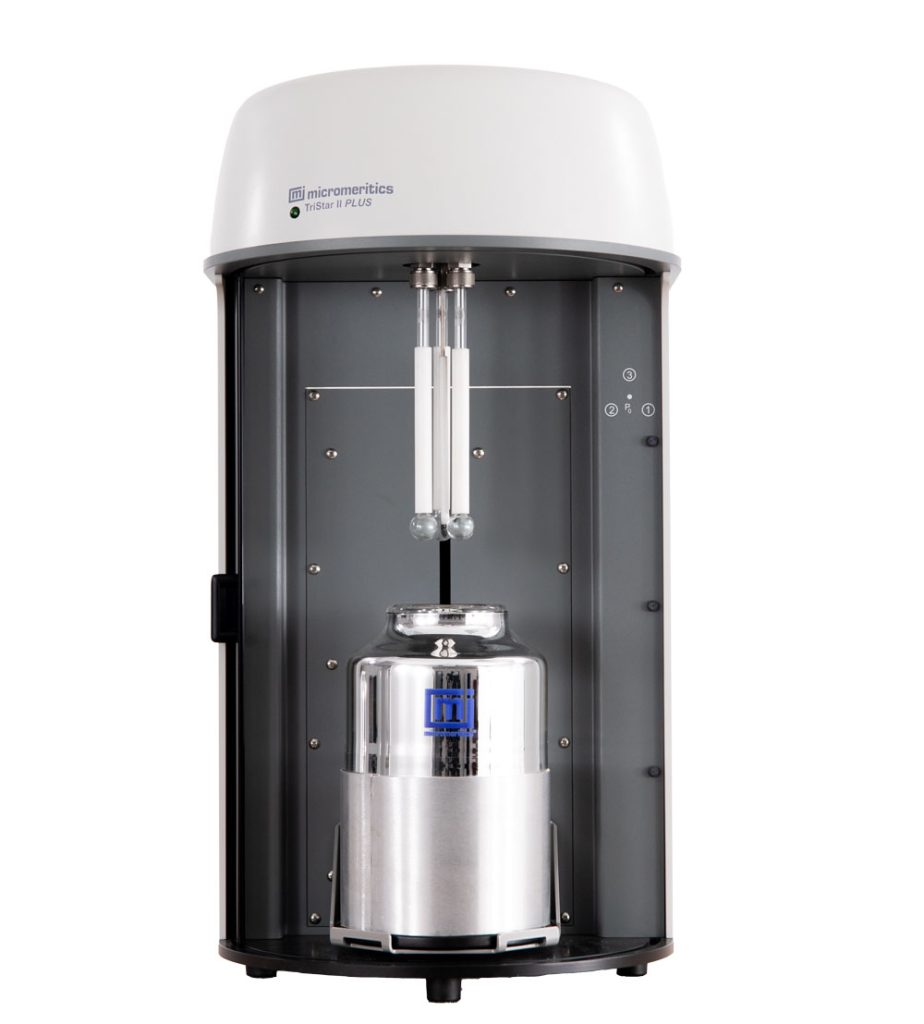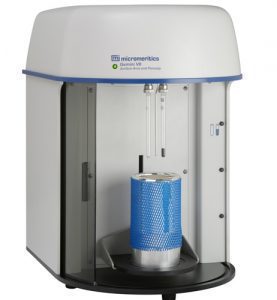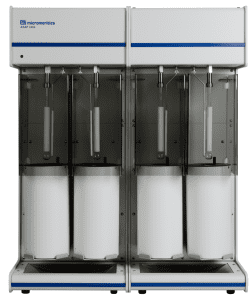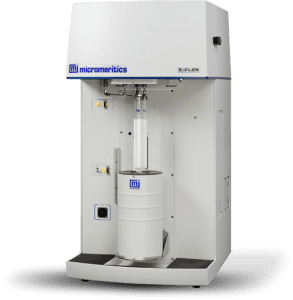- Measures specific surface area of porous and non-porous solids
- Non-destructive, simple sample preparation
- Automated, high-throughput
- Same instruments measure porosity and pore size distribution
Resources
What is BET Surface Area Analysis?
BET (Brunauer, Emmet, and Teller) theory is the most popular model used to determine the surface area of the exposed surface of a solid sample on the molecular scale.
Typically, BET analysis is performed using nitrogen gas (N2) as the adsorbate due to its high affinity for solid surfaces. The gas is introduced at low pressures and the amount adsorbed is determined to calculate the surface area using the BET equation. For low surface area materials, krypton is commonly used as an alternative adsorbate. Due to its lower vapor pressure (2.5 mmHg) compared to N2 (760 mmHg) at 77.35 K, Kr analyses involve a greater pressure change during the adsorption step at the same relative pressure, resulting in greater accuracy.
This important analysis is used in many industries and applications, including battery anodes and cathodes, catalyst characterization, zeolites, MOFs, absorbents, artificial bone, pharmaceuticals, ceramics, metal powders for additive manufacturing along with a wide variety of other applications and industries.
The BET surface area of a material is calculated from the monolayer capacity which is the volume of the first single layer of gas molecules or atoms adsorbed on the surface.
The BET equation is linearized to conveniently calculate the monolayer capacity from the slope and y-intercept of the BET transform plot, which must achieve a sufficiently high correlation coefficient for a valid BET calculation, which is typically 0.999.
Micromeritics Instruments for BET analysis

TriStar II Plus
- Highest-throughput automated BET surface area analysis
- Three-sample parallel measurements maximize productivity
- Independent sample port transducers, a dedicated vacuum system, and a computer-controlled servo valve provide the shortest available measurement time for multi-sample analysis
- Available Krypton configuration for low surface area materials

Gemini VII
- Unique differential measurement design
- Fastest individual surface area measurement
- High accuracy for low surface area using N2 gas

ASAP 2460
- Two to Six parallel measurements for high throughput in a single system.
- Independent analysis maximizes flexibility including multi-gas analysis
- Available micropore capability for pore size and distribution of microporous materials

Flex & 3Flex
- Advanced gas adsorption system
- Highest performance micropore analysis
- Vapor analysis
- Static Chemisorption and Dynamic Temperature-Programmed Reactions Available

